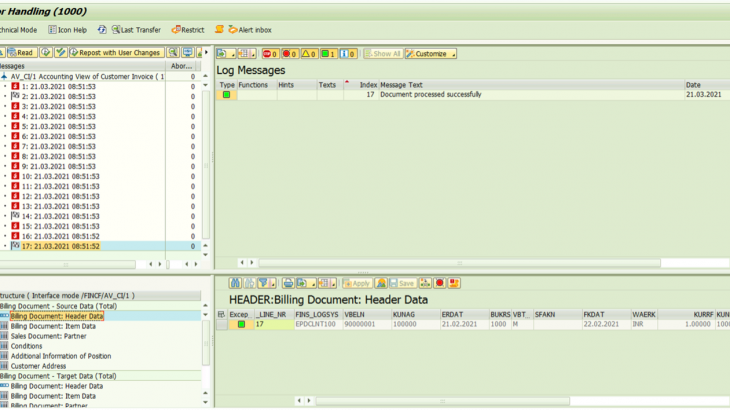In this blog i will be discussing about the AVL functionality in SAP Central Finance. AVL stands for “Accounting View of Logistics information”.
Accounting View of Logistics (AVL) is Central Finance-specific functionality in which logistical information is loaded and replicated from SAP source systems into Central Finance and stored in separate tables.
Benefits
- AVL provides logistics insight in Central Finance without creating logistics data in CFIN
- AVL helps in reporting strategy as reporting might be needing Logistics data and Accounting data. With AVL logistics data is available in S/4HANA and Accounting data is already available in ACDOCA table
- AVL also enables more detailed profitability analysis by providing logistics details and partner functions
- Financial Accounting documents relevant to Customer and Vendor invoices can be linked to Purchase Orders and Sales Orders via AVL
Use Cases
- Reporting integration across finance & logistics data
- Central Purchase Order Accrual management
- Advanced Compliance Reporting (ACR for Tax Reporting)
- Predictive accounting in CFIN
Restrictions
- The AVL is only supported for source systems of SAP ERP 6.0 EhP3 and higher, including SAP S/4HANA systems. (Replication of purchase orders is only supported for source systems of SAP ERP 6.0 EhP4 and higher.)
- Only one client per source system is supported in one SLT configuration.
- Data in the AVL (except purchasing documents and data for which a mapping relationship has been maintained, for example CO-PA or WBS data) is not validated against the customizing nor the master data in the Central Finance system, which is different from General Ledger entries in the Central Finance processing.
What is Replicated?
| Document Type | Table |
| Customer Invoice | VBRK |
| Sales Order | VBAK |
| Supplier Invoice | RBKP |
| Purchase Order | EKKO |
AVL Tables in SAP S/4HANA
The logistics data from the source system system tables is replicated to the S/4HANA Central Finance system and is stored in separate tables specific to CFIN. Here is the list of tables
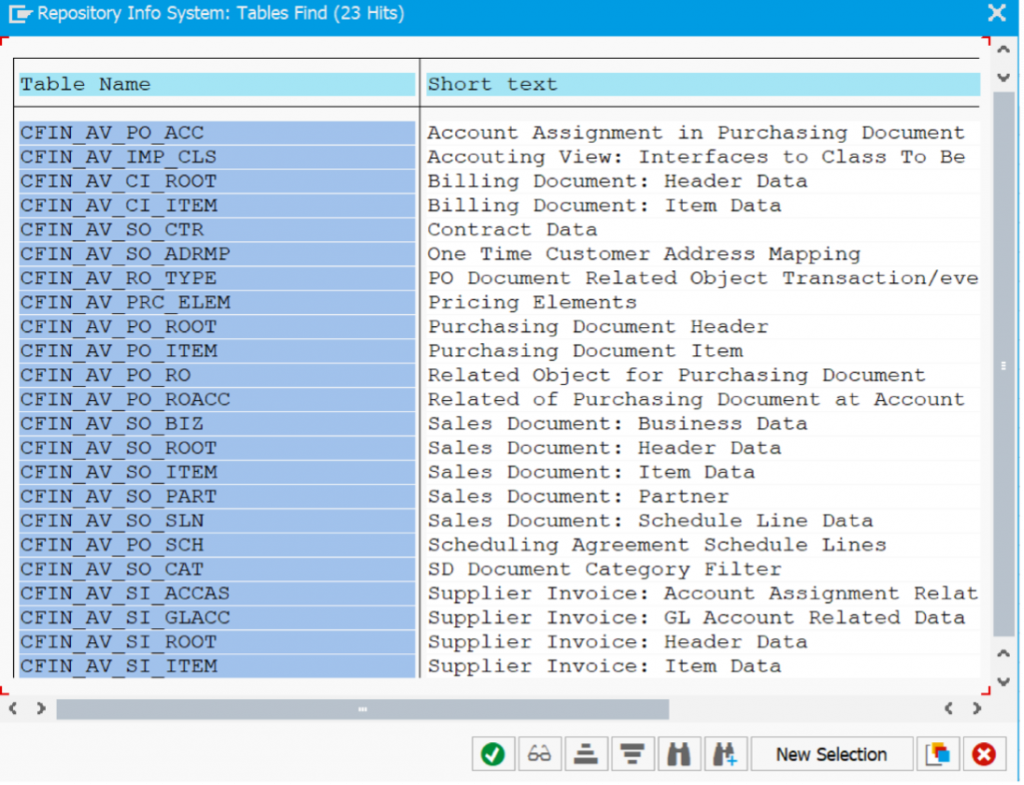
AIF Interfaces available
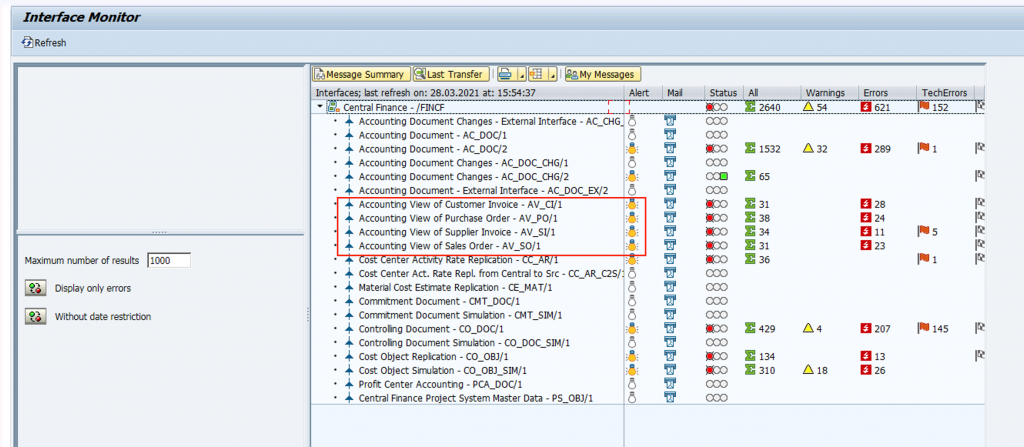
SLT Tables & set up – EKKO, RBKP, VBAK and VBRK

Now i will share end to end example of Sales order data replication and how it looks in CFIN AVL tables
Sales order created in SAP ECC (Order # 5)
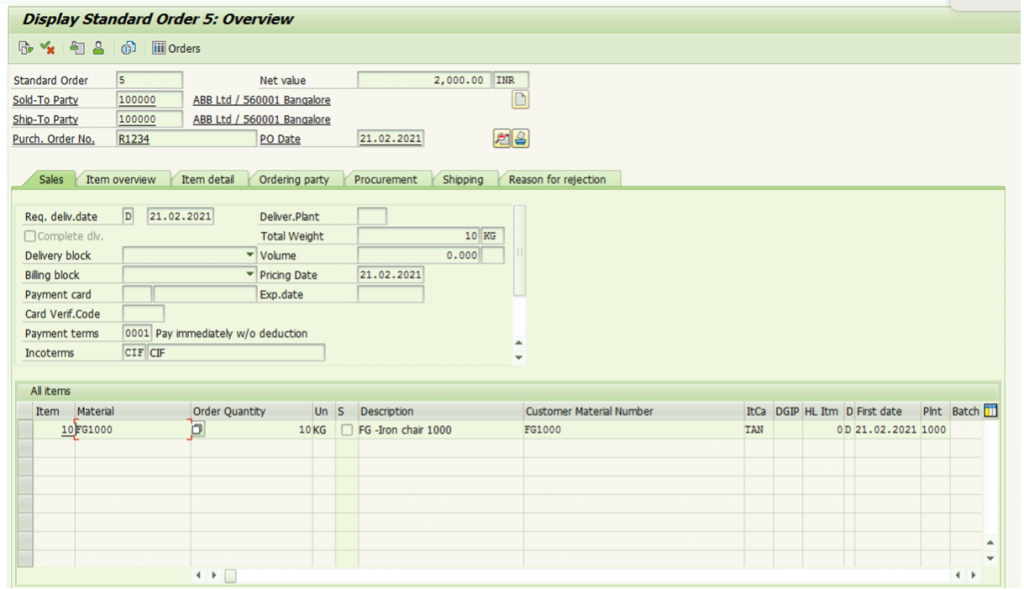
In ECC, VBAK table entry is visible

Replication happens via SLT (VBLEN = 5)
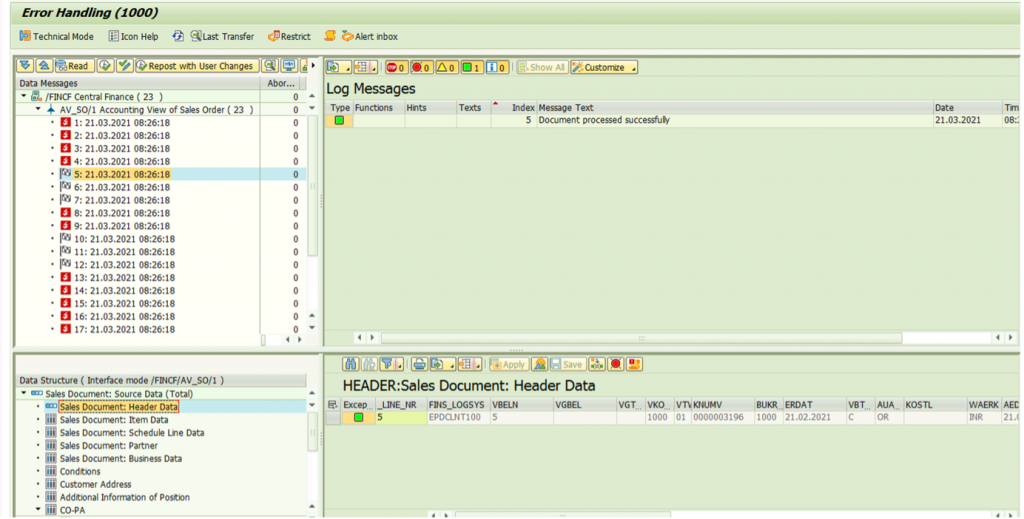
Item data visible in AIF
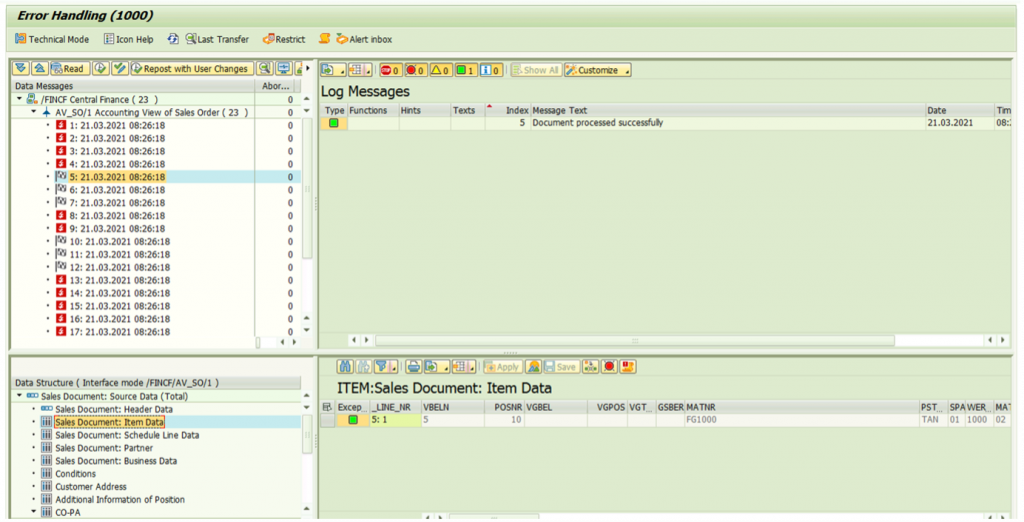
Now we move to SAP S/4HANA 2020 and will see the data in AVL specific tables
CFIN_AV_SO_ROOT – Header Data table
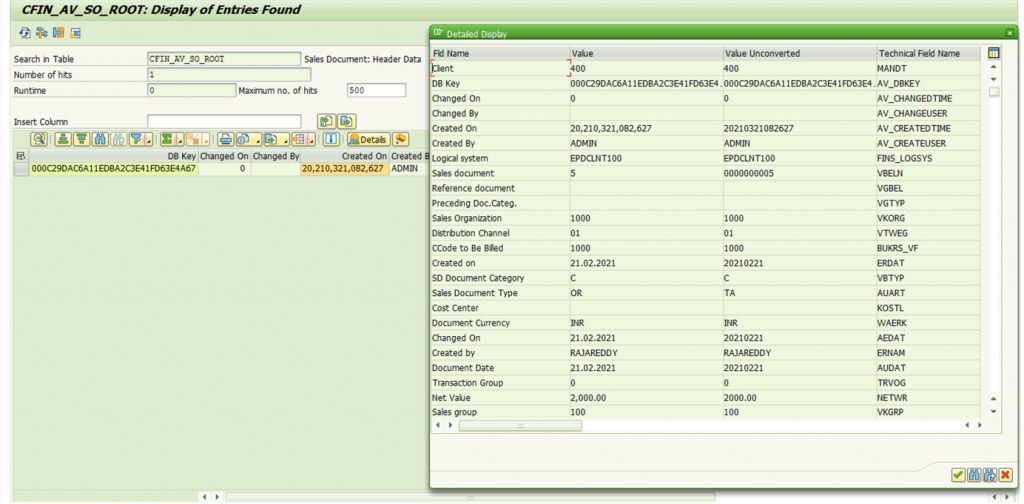
CFIN_AV_SO_ITEM – Item Data table
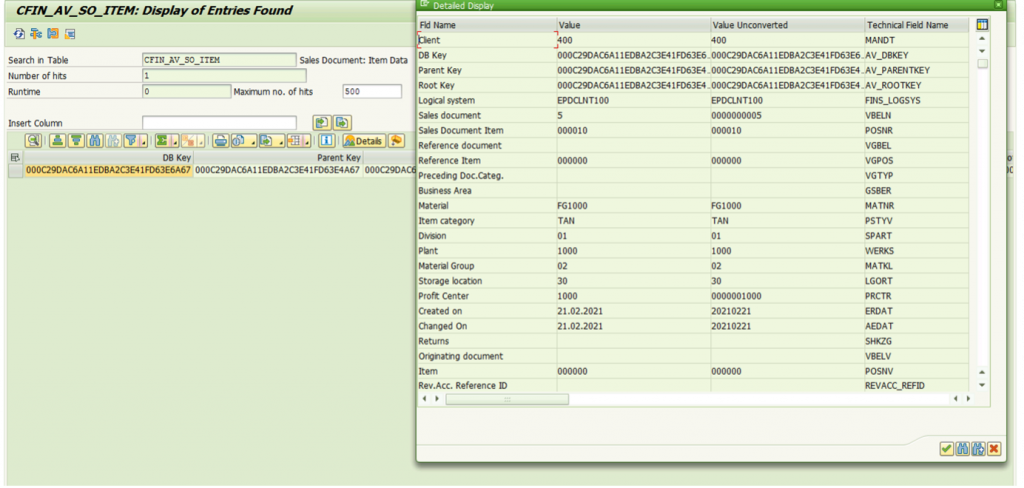
CFIN_AV_SO_PART – Partner Data Table
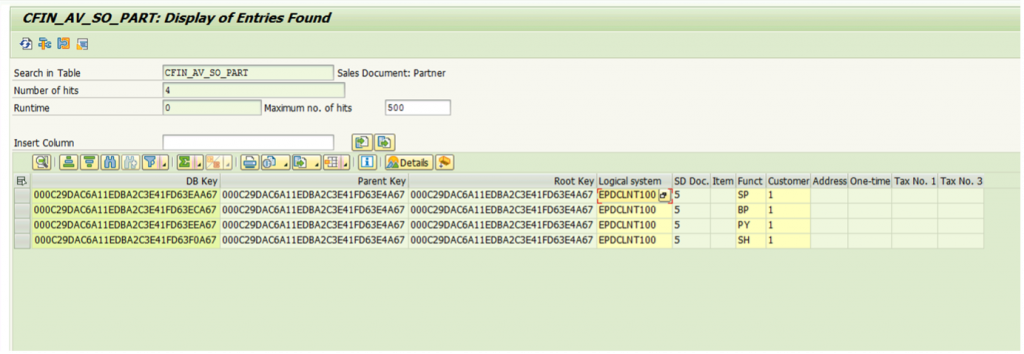
CFIN_AV_SO_BIZ – Business Data Table

Now the Sales order is Delivered & billed in ECC
Document Flow is below
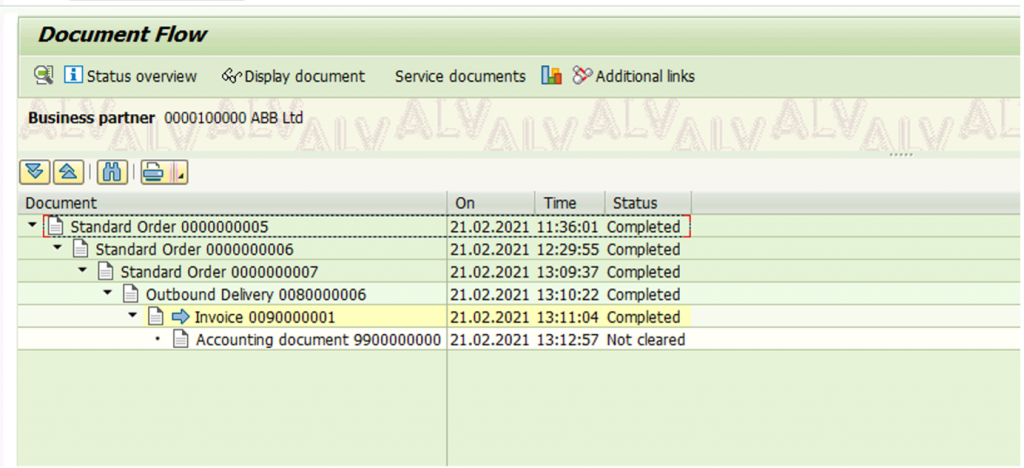
Billing Document gets replicated to CFIN (VBELN = 90000001)
Interface – AV_CI (Customer Invoice)
Header Data
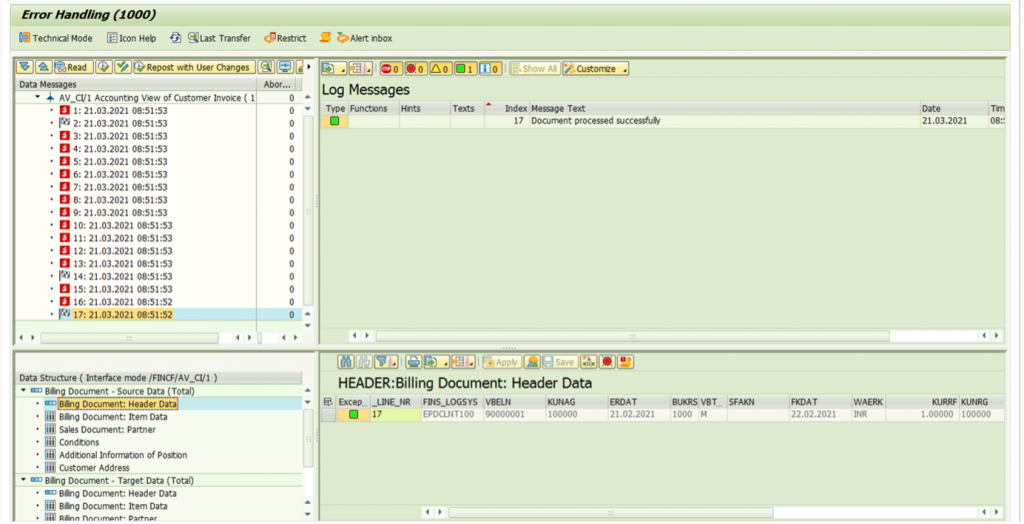
Item Data
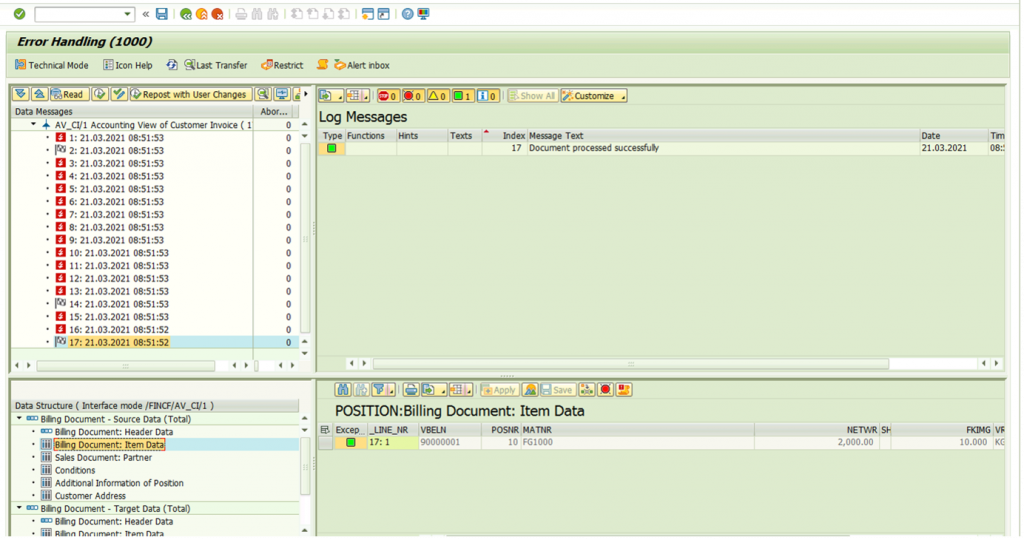
Data in CFIN
CFIN_AV_CI_ROOT – Billing Document Header Data
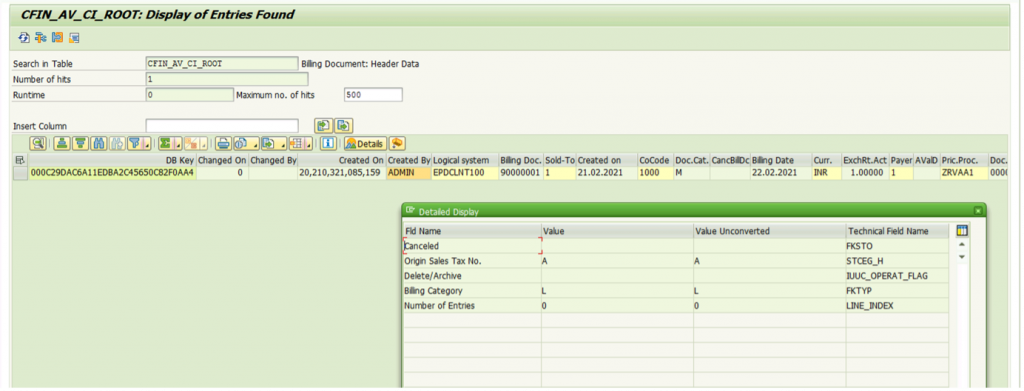
CFIN_AV_CI_ITEM – Billing Document Item Data
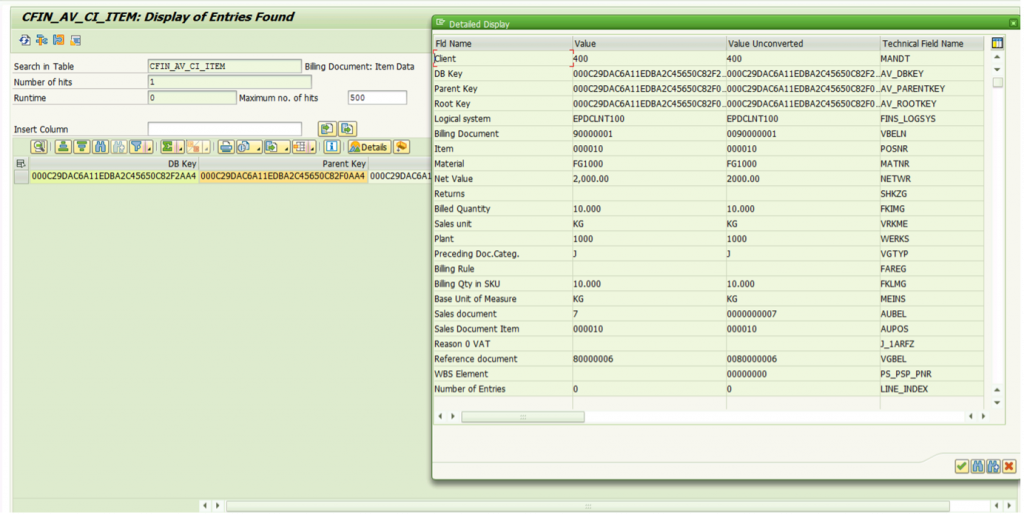
CFIN_AV_CI_PART – Billing Document Partner Data

Similarly it works for PO data and data of PO and Vendor invoice is replicated to below CFIN Tables
| Replicated Business Object | Central Finance Table | Source System Table |
| AVL Purchasing Document | CFIN_AV_PO_ACC | EKKN |
| CFIN_AV_PO_ITEM | EKPO | |
| CFIN_AV_PO_RO | EKBE | |
| CFIN_AV_PO_ROACC | EKBE_MA | |
| CFIN_AV_PO_ROOT | EKKO | |
| CFIN_AV_PO_SCH | EKET | |
| AVL Supplier Invoice | CFIN_AV_SI_ACCAS | RBCO |
| CFIN_AV_SI_GLACC | RBCO | |
| CFIN_AV_SI_ITEM | RSEG | |
| CFIN_AV_SI_ROOT | RBKP |
Reconciliation Reports
FINS_CFIN_DFV_AV_CI for AVL Billing Document
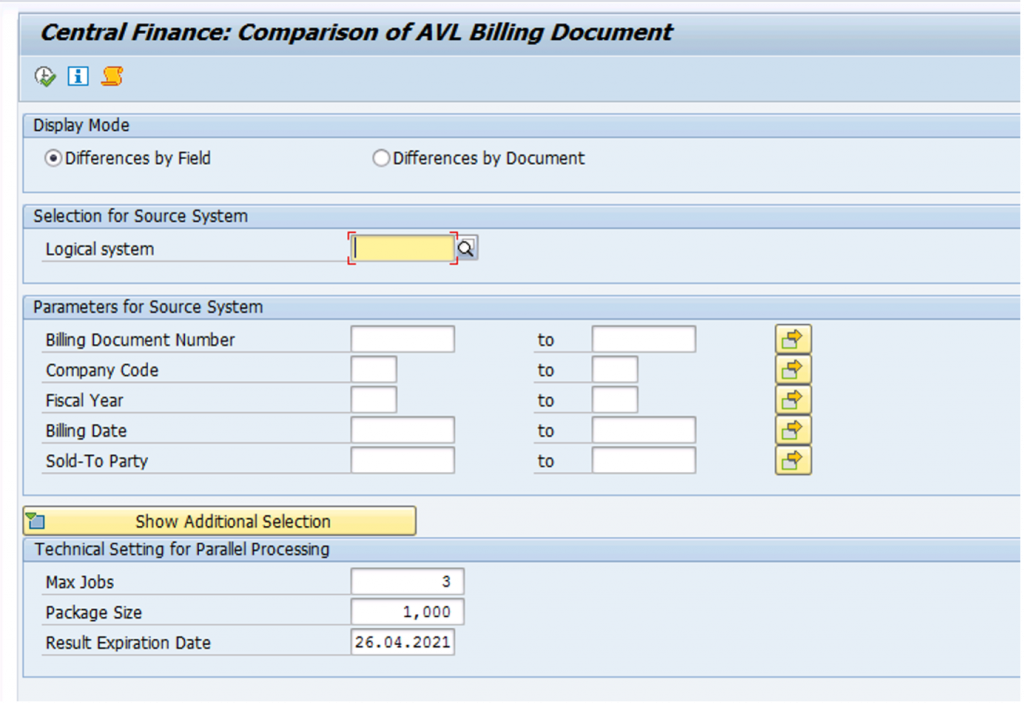
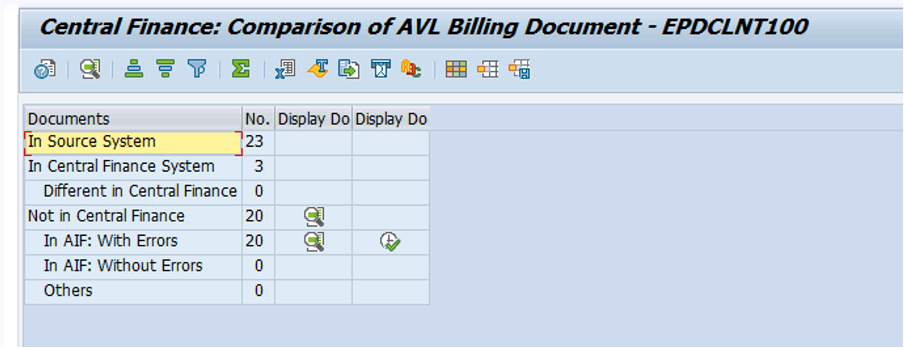
Similarly we have other reconciliation reports as below and you can see differences by field or by document numbers
- FINS_CFIN_DFV_AV_CI for AVL Billing Document
- FINS_CFIN_DFV_AV_SO for AVL Sales Document
- FINS_CFIN_DFV_AV_SI for AVL Supplier Invoice
- FINS_CFIN_DFV_AV_PO for AVL Purchasing Document
